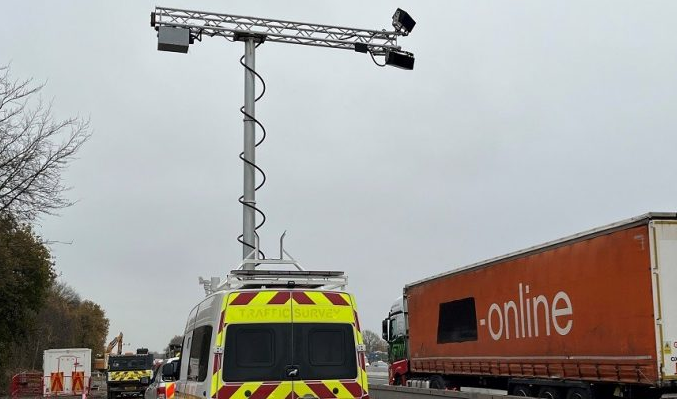
National Highways says it identified more than 750 seat belt and mobile ‘phone offences along a short section of the M6 in Merseyside in December – the highest number at a single site in a study which has visited numerous sites across the Midlands and South West.
At one point, a high-visibility camera placed in the roadworks south of junction 23 of the M6 at Haydock, was spotting an offence every 90 seconds – compared to the average at all other sites of one every six minutes.
The national pilot project collecting data on illegal mobile ‘phone use and the number of both drivers and passengers failing to wear seat belts was in the region – and sited within roadworks – for the first time during the first two weeks of this month.
The government company, which operates, maintains and improves the country’s network of motorways and major A roads, has been working with engineering company AECOM on the pilot project to collect data on offences as part of its work to boost safety.
Jamie Hassall, National Highways manager for the data collection project, said: “We wanted to find out whether driving through a substantial section of roadworks with barriers, a reduced speed limit and other traffic management would mean drivers and passengers modifying their behavior.
“The findings are disappointing to say the least with drivers spotted using a mobile ‘phone almost every five minutes and lots of drivers and passengers simply not bothering to belt up. Hopefully, these results will be a wake-up call to motorway users – especially as we head into the busy Christmas and New Year travel period.”
Around 25 percent to 30 percent of road deaths each year are linked to not wearing a seatbelt and over 100 people are killed or seriously injured in a collision where the driver was found to have been distracted.
The special camera system uses artificial intelligence (AI) to photograph offences which are then verified by at least two pairs of human eyes. The cameras have huge potential to be taught to look for other traffic or vehicle offences and poor driver behavior such as unsecure loads, tailgating or eating at the wheel.
“Almost 60 percent of the mobile phone offences spotted were committed by car drivers, while seat belt offences were typically an issue associated with commercial vehicles, however overall 86 percent of all offences detected were being committed by van or HGV occupants.”
